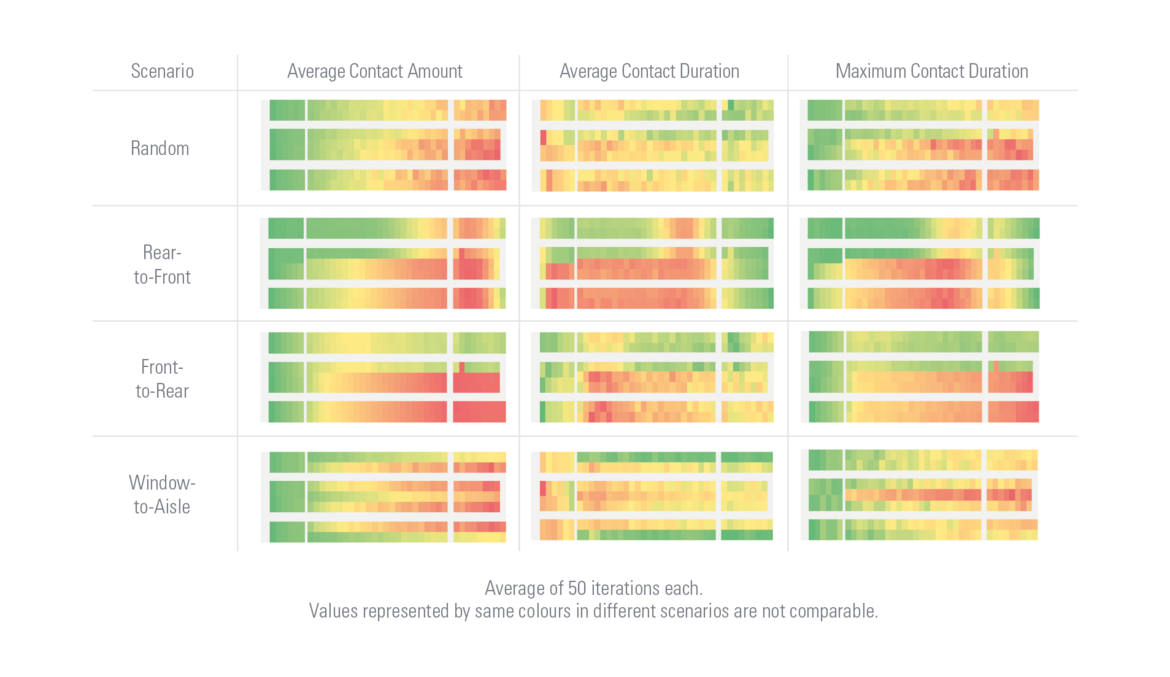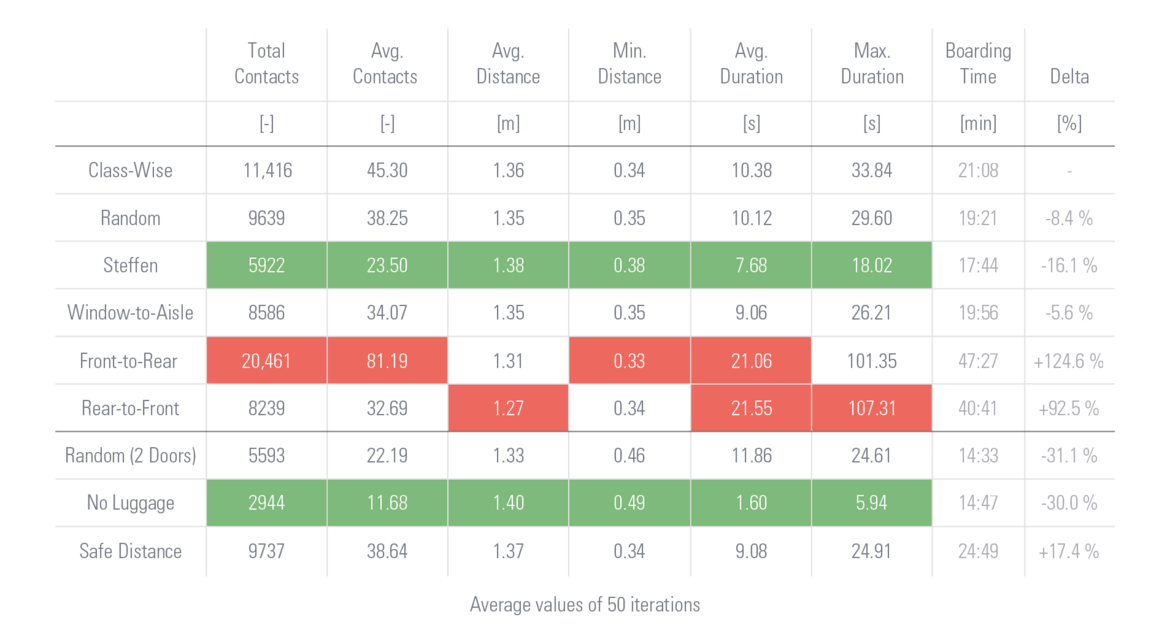The COVID-19 pandemic has severely restricted global air travel and brought into focus the risk of infection during travel in the aircraft cabin. In response to this issue, the passenger flow simulation PAXelerate 1 developed at Bauhaus Luftfahrt was extended to include an assessment of individual passenger COVID-19 exposure risk during the boarding process 2 .
The basic modelling consists of tracking all passenger movement in the cabin during boarding, determining proximity to other passengers, and monitoring the duration and number of individual contacts. This approach is similar to the framework introduced by Apple and Google for contact tracing on smartphones. Analysis of the data for a two-aisle medium-haul aircraft (252 PAX) indicates an increased exposure risk for scenarios involving sorted back-to-front or front-to-back boarding. Boarding scenarios such as window-to-aisle, a random sequence, or the so-called Steffen procedure, on the other hand, appear to be beneficial. Conventional class-wise boarding is used as a reference in each case. In general, advantages are visible for sorting sequences in which the number of interactions and congestion situations is reduced.
The results of the evaluation allow for future adaptation of the currently applied procedures and contribute to the normalisation of international aviation.



